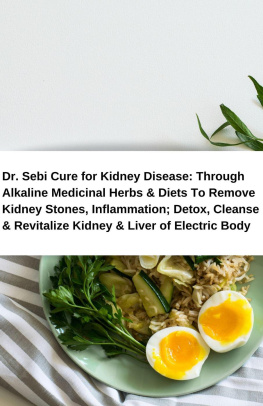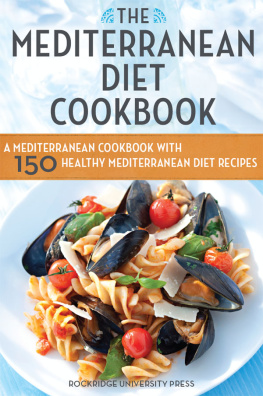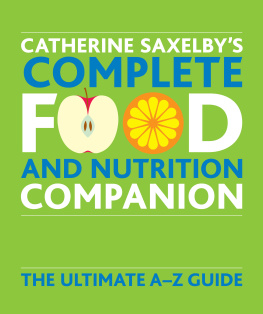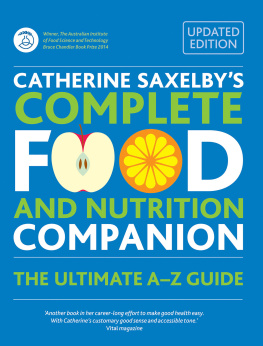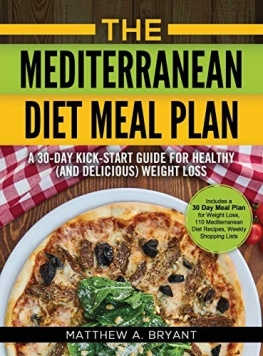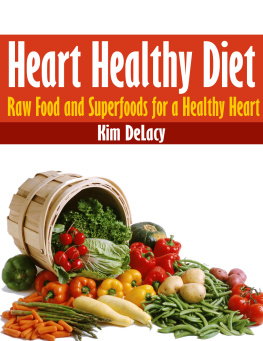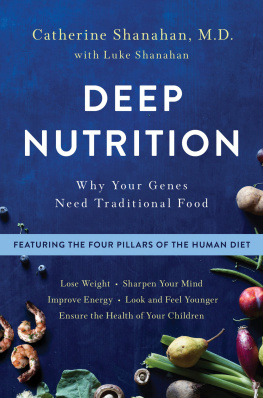Contents
Guide
BLENDING CULTURES, BRIDGING TIME

Pteroglyph found on Anasazi Ridge, New Mexico. The childlike glyph on the right is probably Anasazi, agrarians who lived between 400 and 1000 A.D. The left is possibly Numic, hunter gatherers who displaced the Anasazi after 1200 A.D. No one knows for certain what story it tells. What most attracted me to this particular petroglyph, however, is how the meaning of the original has been modified in a wonderful way, by a younger artist who attached his own symbol to it, in much the same way that our own ancient genetic code has been modified over time by everyone who has carried it.
DEEP NUTRITION
Why Your Genes
Need Traditional Food
Catherine Shanahan, M.D.
Luke Shanahan

The author and publisher have provided this e-book to you for your personal use only. You may not make this e-book publicly available in any way. Copyright infringement is against the law. If you believe the copy of this e-book you are reading infringes on the authors copyright, please notify the publisher at: http://us.macmillanusa.com/piracy.
To Buddy
Of all the souls we have ever met,
he was the most human.
This book is for John Doyle.
Soon after John retired, he and his wife relocated from Ohio to Clearlake, north of Napa County, California. They came to be close to their son, to watch their new grandbaby grow, and to play in a four-season outdoor paradise. But weeks after relocating, John picked up his two-year-old granddaughter and felt a searing pain shooting through his back. What should have been a simple strain that might have resolved itself in a few days simply got worseto the point that he needed help taking a shower. A stoic man, he endured the pain for two weeks before going to see his doctor. An X-ray showed a funny shadow, and the follow-up MRI identified a benign mass growing around his nerve that his doctors thought might be contributing to the pain. He counted himself lucky that the tumor was caught before it became inoperable. So John and his wife came to the hospital where I worked, in Napa, for what should have been a routine neurosurgical procedure. And thats when his luck ran out.
The routine surgery turned out to be not at all routine. It was complicated by an infection, and the infection was complicated by a blood clot in Johns spinal cord that, by the time we met, made it impossible for him to walk or control his bladder and bowel. As his primary care physician, I saw John multiple times a week, and always there was a new problem. It was tragic. To this day, I remember his case in detail; I remember the frustration of dealing with a new medical issue each time he came in for an office visit only to see another problem pop up a few days later. Everything Id hoped to help people to avoidby writing books and posting articles on my blog and speaking in publicand all the work Id done, was to prevent bad things from happening to good people the way they were happening to John. His body was falling apart, and in spite of how easily it all could have been prevented, Id never had the opportunity for early intervention. John was not my patient until it was already too late.
This book is for Johns wife, Margaret. Six months after we met, John Doyle was dead. His infection never cleared and he developed another clot that stopped his heart. After her husband of almost fifty years passed, the RV Margaret and John were going to travel in together became difficult to manage, and aside from her son and grandchild, she didnt know anyone in Clearlake. She relocated to a retirement community in Napa, where I continued to treat her for insomnia, depression, and anxiety. Unlike John, shed always tried to eat right, so aside from stress-induced conditions, she was in good shape. Unfortunately, their son followed Johns eating habits more than Margarets, giving low priority to healthy eating and, unknowingly, putting his offspring at risk.
This book is for Johns young granddaughter, Kayla. Her dad and his girlfriend were dedicated parents, and when baby Kayla developed eczema, her moms pediatrician advised switching to formula. It didnt help. But by the time they figured that out, her mothers breast milk production had stopped. At age three, Kayla developed a limp that turned out to be the result of a brain tumor. Margaret took her RV back up to Clearlake and parked it in her sons driveway so she could help out. Like so many of my health-conscious patients, she found herself staring down at two generations of failing health, a scenario that too many health practitioners would just chalk up to bad luck.
The story of the Doyle familya story of life interrupted, of hopes, dreams, and plans taking a sudden, unfortunate turnis one I see play out in my office all the time. These are stories that could have happier endings.
The narrative of this entire family would have played out differently had they benefited from preventative intervention. But in the current healthcare system, people dont receive the most powerful form of preventative medicinea comprehensive dietary education. We hear about barriers to healthcare all the time, but that was not John Doyles problem. He was lucky enough to have had excellent insurance; it covered all his bills and granted him plenty of access to every specialist he needed, whenever he needed it. What Johns medical providers couldnt offer himwhat few doctors can offer any of their patientswas a crash course in healthy eating. Without this knowledge, he was left vulnerable to a most insidious killer: the standard American diet.
His previous doctors never spoke to him about diet. And why would they? Medical doctors are simply not trained to consider how a persons diet might contribute to medical conditions other than obesity, diabetes, or heart disease. What little we physicians do learn about preventing illness is so useless that few of us even abide by it ourselves. Since theres not much by way of standardized nutrition training, any doctor interested in nutrition must take it upon himself to study on his own. And any physician hoping to fully understand how nutrients and toxins act in the body would need a particularly strong background in biochemistry and cell physiology.
When my own health took a turn for the worse in 2001, I leaned heavily on my undergraduate training at Rutgers University and graduate work at Cornell studying biochemistry and molecular biology as I tried to flush out any possible connection between my health problems and my diet. The deeper I dug, the more critical that training became. The revelations were so profound, I immediately started putting them to use to help my patients.
Like most doctors, I had an average of seven minutes with each of my patients. So although there was no time for a wholesale revision of their dietary program, I could at least leave them with some key advicelike cut out vegetable oils and reduce sugarsthat would, more often than not, produce amazing benefits. Im talking about reversing high triglycerides, hypertension, eczema, recurring infections, migraines, and more.
As much as hospitals and clinics like to talk about wellness and prevention, the truth is, a real discussion about healthy eating cannot take place in a doctors office. This is why in order to check off the nutrition-discussion box they rely on sound-bites, like eat your colors, which doesnt really mean much, or everything in moderation, which, in a world where toxins are marketed as health foods, can be harmful advice. Providing real dietary guidance requires far more time with patients than insurance models currently allow. You could fill a book with what needs to be discussed for anyone to adopt a truly healthy dietwhich is why, in 2003, I started writing this one.


